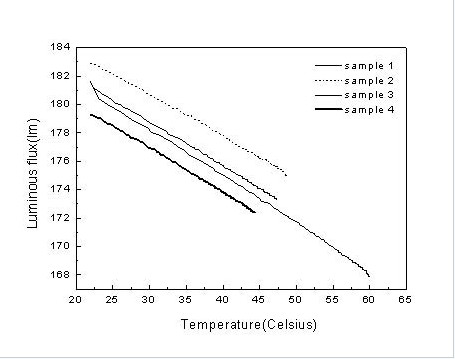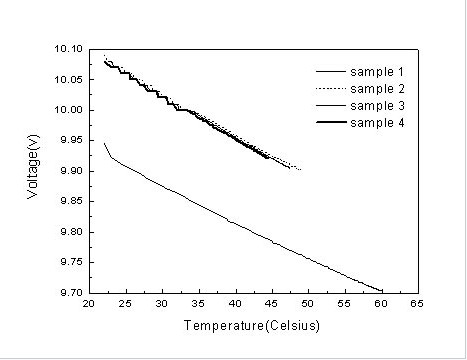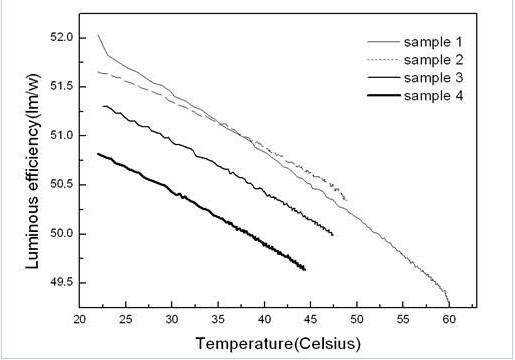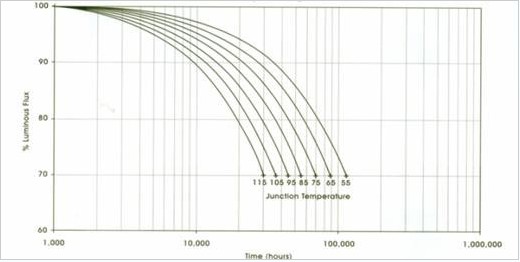I. Introduction
As the luminous flux of LEDs exceeds 100 lm/W, LEDs are increasingly valued as functional lighting, and many domestic and foreign manufacturers have studied LED luminaires. Although the effective luminous flux of LED road lighting fixtures gradually meets the requirements of road lighting, LED is a new type of lighting source, and many researchers need to conduct in-depth research.
Second, the related performance of LED lamps
This paper mainly elaborates and studies three aspects of LED lighting for road lighting: heat dissipation of lamps, light distribution of lamps and safety of lamps.
(1) Heat dissipation of lamps
Almost 20% of the energy of the LED chip is converted into light, and 80% of the energy is released in the form of heat. The voltage, luminous flux and luminous efficiency of the LED will decrease linearly with the increase of temperature, as shown in Figure 1, Figure 2. And Figure 3.

Figure 1 Curve of luminous flux with temperature

Figure 2 Voltage versus temperature curve

Figure 3 Curve of light effect with temperature
In addition, the heat dissipation effect of the luminaire will directly affect the service life of the luminaire, as shown in Figure 4.

Figure 4 Relationship between service life and junction temperature
Therefore, how to effectively dissipate heat is the key to the development of LED road lighting. It mainly involves four aspects: conduction (material heat transfer coefficient, applied temperature, etc.), convection (convection heat transfer coefficient and ambient fluid temperature, surface heat flux), and radiation (accelerated radiation). Materials), material properties (thermal stress strain analysis, thermal fatigue analysis, thermal induced structural failure analysis, etc.).
For conduction: 1, using rapid heat transfer materials such as heat pipes, copper, aluminum, etc.; 2, reduce the interface thermal resistance; for convection: 1, increase the contact area with air; 2, increase the heat capacity of the material; Increase convection and so on. For radiation: 1, using a new type of radiation material, can increase the radiation efficiency of the radiator below 100 degrees. For material properties: thermal stress strain analysis, thermal fatigue analysis, and thermal induced structural failure analysis are mainly considered. Considering the above factors, a reasonable lamp structure (double heat dissipation structure) can be designed, as shown in FIG.